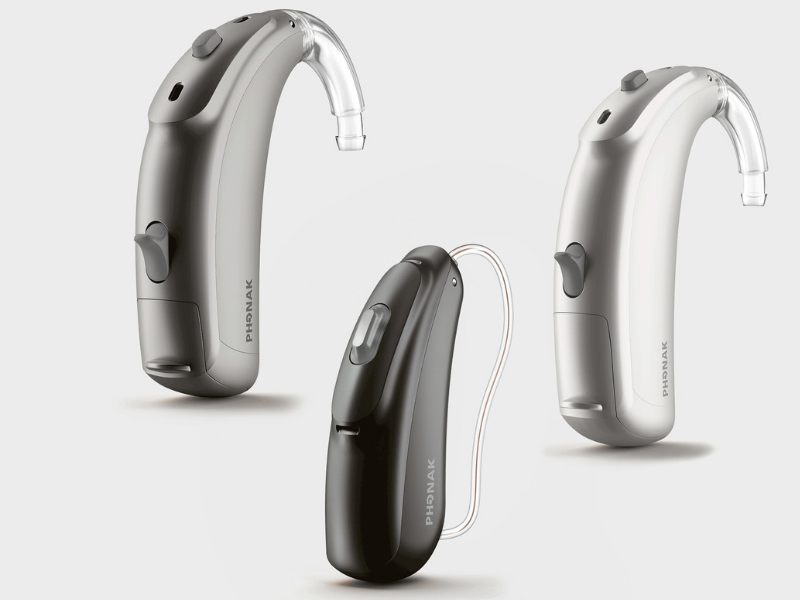
A hearing aid is more than just an amplifier of sound. It’s a complicated and sophisticated communication device which can, quite literally, change people’s lives. While the benefits of hearing aids are widely recognised, the workings of them may be something of a mystery.
What does a hearing aid do?
In the most basic terms a hearing aid detects sounds, processes them, converts them into an electrical signal, amplifies the sound, and then releases it back into the ear. It achieves all this within microseconds.
Parts of a hearing aid
There are two types of hearing aid: analogue and digital. Whichever type of hearing aid is being used, it will have same four vital components:
- Microphone – this is sited on the outside of the hearing aid, where it picks up the sound from around the listener as it enters the ear. It then converts the sound waves into digital signals.
- Amplifier – this strengthens the digital signal to increase the sound level.
- Receiver – this converts the digital signals into the vibrations that pass through the inner ear, which ultimately reach the brain.
- Battery – these functions are all powered by a tiny battery
In addition to the above parts, a digital hearing aid also contains a silicon microchip. This acts as a miniature computer and is configurable so that the hearing aid can be set to meet the needs of the individual wearer.

Analogue hearing aids
These days, analogue hearing aids are rarely used, as they have largely replaced by the more versatile digital versions. They operate as already described, and usually have different settings that can be changed depending on the environment at the time.
Some, more advanced, analogue hearing aids are able to detect the volume of the sound around them and decide whether it needs to be amplified, for example, the sound of a large crowd. This is known as ‘automatic gain control’.
Digital hearing aids
These are much more scientific devices, which include a silicon chip that acts as a microprocessor. This microchip continuously processes incoming sounds and converts them into numerical codes. These numerical codes, which are similar to binary codes, create a clearer, more audible sound. These sounds are then released into the ear at the appropriate sound level. Digital hearing aids can all distinguish between sounds that need to be amplified and those that are unwanted.
Settings
Many hearing aids offer different settings. Analogue hearing aids are changed manually, while digital ones may have a handheld control or even be controllable through a smartphone application. Some hearing aids can even connect wirelessly to mobile phones, TVs and stereo systems for a perfect sound experience. In addition, digital hearing aids typically offer digital feedback reduction, digital noise reduction, digital speech enhancement and directional microphones for perfect sound in every situation.
Most hearing aids are suitable for use with a hearing loop, known as the ‘T’ or telecoil system, which are often found in public places, such as theatres and auditoriums. T systems are identified by a blue sign. Hearing aids that work with T systems are also suitable for use with landline phones that are compatible with hearing aids.
As can be seen, a hearing aid is a huge amount of functionality in a tiny package. A tiny package that can have an almost miraculous effect on people’s lives.
Looking for a hearing test feel free to contact us for more info
